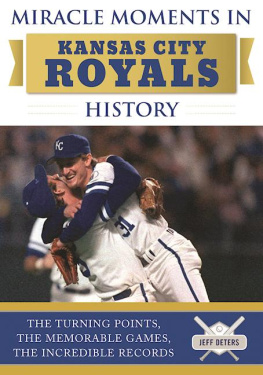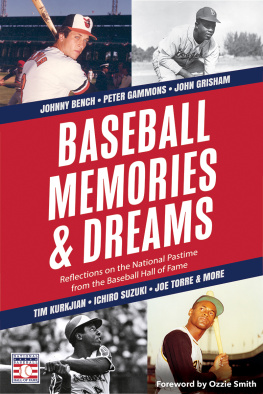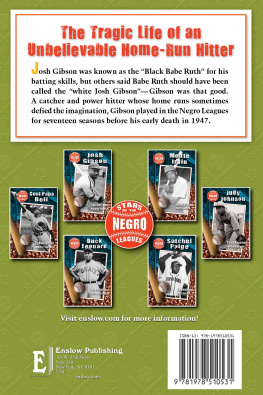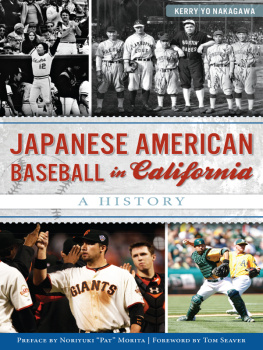T HE D EVIL S S NAKE C URVE

COPYRIGHT 2014 Josh Ostergaard
COVER AND BOOK DESIGN by Linda Koutsky
COVER AND INTERIOR ILLUSTRATIONS Andy Sturdevant
AUTHOR PHOTO Ruth Ostergaard
Coffee House Press books are available to the trade through our primary distributor, Consortium Book Sales & Distribution, .
Coffee House Press is a nonprofit literary publishing house. Support from private foundations, corporate giving programs, government programs, and generous individuals helps make the publication of our books possible. We gratefully acknowledge their support in detail in the back of this book.
Visit us at coffeehousepress.org.
LIBRARY OF CONGRESS CIP INFORMATION
Ostergaard, Josh.
[Essays. Selections.]
The devils snake curve : a fans notes from left field / Josh Ostergaard.
pages cm
SUMMARY: The Devils Snake Curve offers an alternative American history, in which colonialism, jingoism, capitalism, and faith are represented by baseball. Personal and political, it twines Japanese internment camps with the Yankees; Walmart with the Kansas City Royals; and facial hair patterns with militarism, Guantanamo, and the modern security state. An essay, a miscellany, and a passionate unsettling of Josh Ostergaards relationship with our national pastime, it allows for both the clover of a childhood outfield and the persistence of the games service to those in power. America and baseball are both hard to love or leave in this, by turns coruscating and heartfelt, debut. Josh Ostergaard holds an MFA in creative writing from the University of Minnesota and an MA in cultural anthropology. He has been an urban anthropologist at the Field Museum and now works at Graywolf Press. PROVIDED BY PUBLISHER.
ISBN 978-1-56689-346-6 (e-book)
1. BaseballUnited States. 2. Popular cultureUnited States.
3. Baseball stories, American. 4. Alternative histories (Fiction)
I. Title.
PS3615.S636A6 2014
813'.6DC23
FIRST EDITION | FIRST PRINTING
T HE D EVIL S S NAKE C URVE
Contents

It wasnt true. But nobody cared.
They all laughed. They thought it was true.
They wanted to believe it was true.
PHIL PEPE,
The Wit and Wisdom of Yogi Berra
Now he and I are
watching some men with a ball.
No matter the shape or size of the ball, what
team or for what country the men fight.
The TV is showing men with a
ball so were watching.
MARY ROBISON,
Why Did I Ever
L ONG A GO , IN K ANSAS
T he clover in deep left field was delicious. I crouched for a better look, laid my glove on the thick green grass. My shoe was untied. A cluster of purple flowers gleamed, each blossom a mid-inning snack. I picked the best onenot the biggest, because their nectar has usually dried, but the darkest purple bud. I stood, tucked my glove under my arm, plucked the long purple threads, placed their white stems between my teeth, and pulled. Sweet nectar spread across my tongue. Coach called my name. I looked. The inning was over. My teammates were already in the dugout.
W INTER S UNSHINE
It was the worst part of winter: the dark, dead stretch between the end of the World Series and the day pitchers and catchers reported for spring training. At eleven years old, it was my season in hell. Days were short and temperatures steadily dropped, nothing to do but throw snowball strikes. But one day was differentin the basement I conjured sunshine.
A few months before, during the hottest part of summer, I had spent my allowance on two blank cassette tapes and stolen my older sisters tape recordera black-and-silver machine the size of a shoe. She always taped songs off the radio, like Wake Me Up Before You Go-Go. Wed lie on the floor of her bedroom and listen. But I had a new plan. The Kansas City Royals played every night in our living room. The announcers kept us company, reciting the details of the games, sharing memories of past seasons. One sweltering evening, recorder in hand, I crept through the living room to our ancient family stereo and turned up the volume on the game. I placed the machine next to a speaker and pushed Record. The tape rolled slowly forward. I left the room to light the grill and ignored the game, hoping to remain ignorant of the score. I returned only to flip the tape.
Now it was winter, and even on a rare sunny day the light in Kansas was dim and thin, like air breathed through a heavy scarf. It was bitterly cold, and dirty snow was piled high on the edge of everyones driveway. My older sister was busy with band practice, and my younger sister was busy reading Lord of the Flies. I could not take one more day of winter. I dug the tape from the nest of junk that was my bedroom, stole my sisters tape player, and darted down to our unfinished basement. It was dark, cold, and I was alone. Spring would never come. I settled in a corner, under a blanket, near a heat vent. I pushed play, the wheels turned slowly, and I heard announcer Denny Matthews say, Well be back in a few minutes with the lineup for todays game against the White Sox.
I sat and listened, and though I could hear the wind moaning outside our house as it whipped the branches of our giant cottonwood trees, the basement seemed to fill with sunlight and warmth. I listened to the announcers banter back and forth and call the play-by-play, and suddenly it was a hot July day, the peak of summer, with months still left in the baseball season. It was staying light until nine, the Kansas City Royals had hopes of winning, cared about winning, tried to win. In the emptiness of winter it seemed possible as I listened to Bret Saberhagen, Bo Jackson, Kevin Seitzer, and George Brett keep the Royals aloft in the league standings.
U NIVERSAL R EVERENCE
On my first visit to the Baseball Hall of Fame, I looked for the plaque awarded to Royals legend George Brett. While I was growing up in Royals country, Brett was one of the best players in the nation, keeping us in contention year after year, and he is the only player inducted wearing a Royals uniform. But his career is more than just a smattering of memoriesits a reminder of what became of the Royals after he retired. They lost 100 games in 2002, and in the year of this visit, 2004, they were on their way to losing 104.
Bronze plaques lined the wood-paneled walls. I did not see George Brett. I was surrounded by Yankees: Babe Ruth, Reggie Jackson, Whitey Ford, Yogi Berra, and on and on, everywhere I looked. The Royals rivalry with the Yankeesmy rivalry with the Yankeesbloomed in the late seventies and eighties, when the Royals fielded contending teams and actually beat them in the playoffs. Years later, disgust for the Yankees lingered in the Kansas City air like a stench from a rendering plant. As I stood in the Hall of Fame, I looked at the Yankees enshrined on the wall and felt anger zipping along the nerves in my arms and legs.
And then I found Bretts plaque:
Played each game with ceaseless intensity and unbridled passion.... Hit .390 in 1980 MVP season and led Royals to first World Series title in 1985.... A clutch hitter whose profound respect for the game led to universal reverence
The next season, 2005, the Royals lost 106 games, and in 2006 they lost an even 100. Reading Bretts plaque and seeing it there with the other greats was a balm, and though it reminded me that Kansas City has a disadvantage by dint of geography and economics, it also proved that the system once allowed Podunk teams to compete.
Next page












